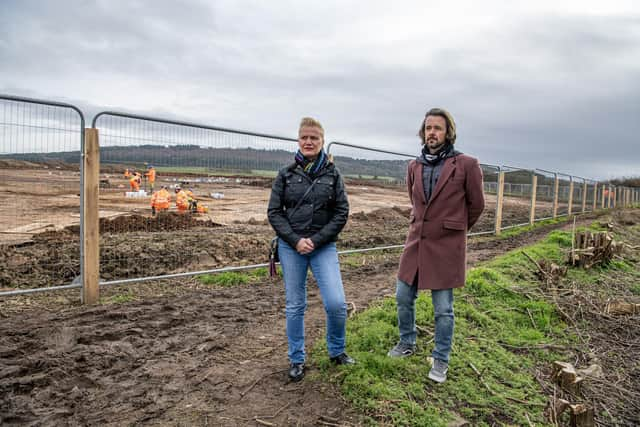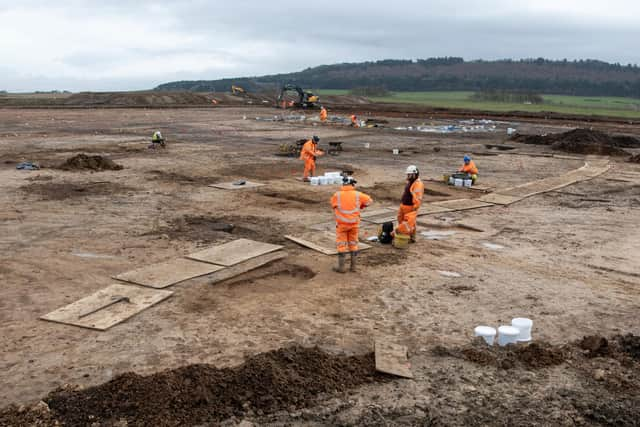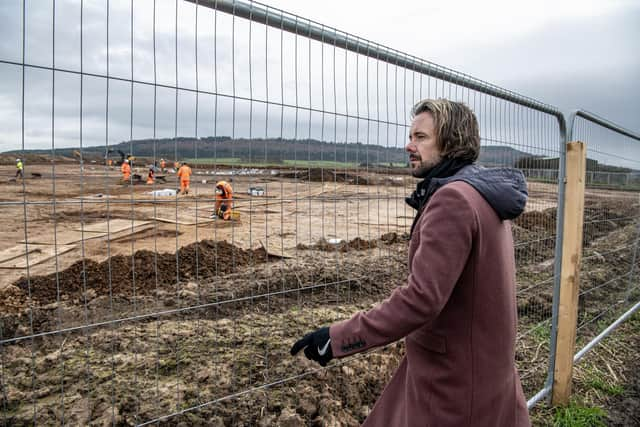Meet the Yorkshire coast residents who fought to get land earmarked for 800 houses listed as a Scheduled Ancient Monument
The government’s heritage protection body is now considering whether to grant listed status to what is currently a building site in Marske-by-the-Sea after a local archaeologist presented them with evidence that the ruins of a Roman villa lie beneath the former agricultural land.
The 118-acre site near the village has planning permission in place for 812 homes, a pub, hotel, health centre, convenience store, primary school, nursery, drive-thru food outlet and petrol station. It is being developed by housebuilders Miller Homes and Taylor Wimpey, who initially denied that significant remains had been found.
Advertisement
Hide AdAdvertisement
Hide AdThe Yorkshire Post reported earlier this month how archaeologist Dr Kendra Quinn was given a copy of a survey of the site completed by the developers’ archaeological contractors, which she believed provided evidence of a Roman ‘ladder settlement’ spanning 40 acres with villas as well as pre-Roman roundhouses and burial mounds.


This week, drone footage has further revealed potentially ancient walls that have been uncovered by the contractors and do not already appear on maps or registers.
Described as a ‘game-changing’ find by local councillor Tristan Learoyd, it has led to campaigners questioning whether the developers still consider the land viable if it is eventually granted Scheduled Ancient Monument designation with the accompanying restrictions.
Coun Learoyd claimed that additional trenches were being excavated by the contracted archaeologists and that some remains had been covered by plastic to deter drone photography.
Advertisement
Hide AdAdvertisement
Hide AdHistoric England’s regional director for Yorkshire, Tom Frater, confirmed in an email seen by The Yorkshire Post that officers have now conducted a site visit and are undertaking further assessments.


He wrote: “The key issues for us now are what should happen with the site, and what can we learn from these events for the future.
"The archaeological works currently on site are being carried out by a reputable archaeological contractor, who have a good record of undertaking similar work across the wider region on many occasions. My expert colleagues are confident that these works are being undertaken with due diligence and to recognised professional standards. The specification for this work (a Written Scheme of Investigation, or WSI, in archaeological terminology) has, I understand, been discussed and agreed as appropriate with the archaeological consultant advising Redcar and Cleveland Council. An initial geophysical survey was undertaken for the whole site, and this will then be used to target trial trenching, followed by fuller excavation if appropriate.
"This staged process is exactly what we’d expect to see on this kind of major development. However, I also think it is important to note that in this case there are no conditions on the planning permission for the development requiring this archaeological work. Despite this, the developer has elected to commission the works themselves. This is a more unusual situation, but one in which a developer is nonetheless following best practice, despite the lack of planning conditions.
Advertisement
Hide AdAdvertisement
Hide Ad"Like you, I think it would be beneficial if the results of the archaeological work, and the importance of the developer in the process of this discovery, were better known. We have encouraged the developer to consider how to help local people better connect with the ongoing dig and evidence found so far. They are amenable, albeit there are real points about site safety that also need to be considered.


“An application has been made to legally protect the archaeological remains on the site as a scheduled monument. This work is carried out by a specialist section of Historic England. They have visited the site in person and are considering the application now. As part of this, we will prepare what is called a consultation report, utilising all the sources available to us. The ultimate decision will then rest with government ministers.”
The development has been contentious for years, and was passed on appeal by the HM Planning Inspectorate in 2017. Campaigners have argued that it would not have been given consent if appropriate investigations at the time had revealed the presence of the ancient remains at the site.
